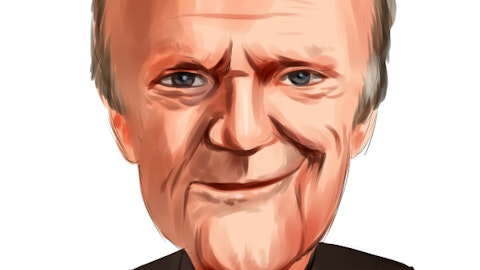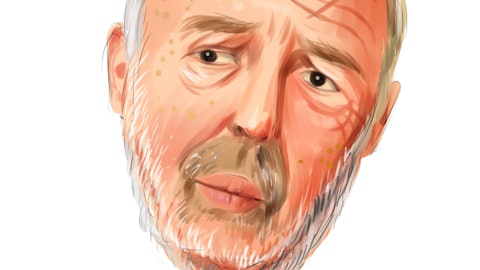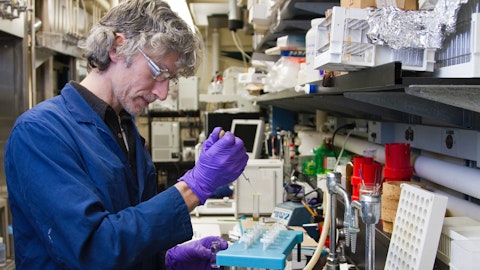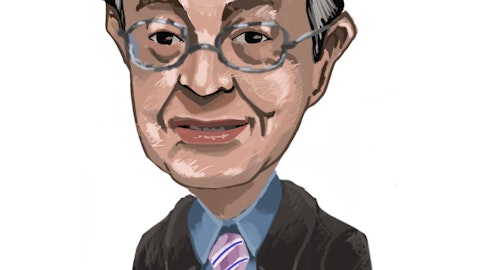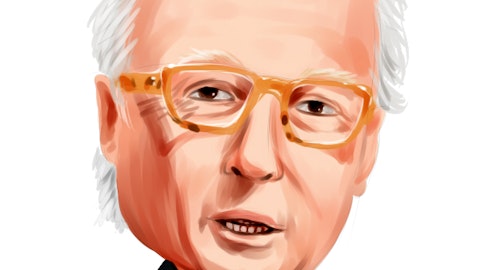John Sprague: Exactly. And the fixed cost at this point is steady. We’ve got plenty of capacity for both instruments and reagent tests.
Ben Haynor: Got it. I think that’s all I had for the moment. I’ll jump back in queue.
John Sprague: Thank you, Ben.
Ben Haynor: Thank you.
Operator: Thank you. Your next question is coming from Kyle Mikson from Canaccord. Your line is live.
Kyle Mikson: Hey, guys. Thanks for taking the questions. Congrats on the record results for the quarter and for the year. Just on the guidance, I guess John wanted to give you the opportunity to talk about the lack of placement guidance, I guess, and why that is less visible to you, given the backlog that you kind of mentioned, I think. And then also for ’23, do you think that the product revenue is not going to be more skewed towards consumables revenue this year or instruments? Thanks.
John Sperzel: Thank you for the question, Kyle. So our revenue, our Sepsis and related product revenue in 2023, we expect to be driven primarily by test cartridges, T2Bacteria, T2Candida, T2Resistance, certainly that will be increased if we’re successful in getting T2Resistance in front of and cleared by the FDA. As far as instrument guidance or lack of instrument guidance, we just chose to focus our entire organization around driving Sepsis and related product revenue. That includes the corporate incentives. It includes the sales rep compensation. And so, likewise, we’re making our guidance in line with that.
Kyle Mikson: Okay. All right, that’s fair. Thanks for that. And just one more on the guidance, I think you mentioned a raw material issue recently. You think that’s going to get resolved quickly, and then you want to ship and recognize revenue on all the back orders by the end of March. So the guidance here is that predicated based on that assumption? And then what happens if that kind of trickles into the second quarter? Does that delay further shipments and stuff like later in the year and then that kind of affects the guide as well. Just kind of thinking about that?
John Sperzel: Sure. As a reminder, we have a highly sensitive platform, so any agent that might be in a raw material can impact the quality of the product. As I mentioned in the prepared remarks, we caught this in our Internal Quality Inspection. So none of that product got to customers. We anticipate resolving the back order by the end of March. If that doesn’t occur, then some of that revenue we would expect to spill into the second quarter.
Kyle Mikson: Okay, got you. And on the research and contribution revenue, sorry to keep going over the financials here, but it’s interesting to breakout here. So I heard what you were saying about the extension to allow for the time for the Resistance Panel, and that might kind of allow you to complete Option 3 and then I guess Option 4 thereafter. I mean, what would happen if you’re denied, I guess that extension like what would that do for the BARDA contract as a whole? And would you even be allowed over time to get to Option 4, I mean just how do we, if we are talking the worst case scenario there, I guess?
John Sperzel: Sure. Between 2019, I think the Fall of 2019 when the BARDA contract was granted and the end of 2022, two no cost extensions had already been filed, one at the request of BARDA, one at the request of T2, in the case of BARDA, they weren’t ready to fund the next option at that time. And in our case, we needed a little bit more time to generate some data. In both cases, all of the milestones were met according to the statement of work in the contract. So I think it’s very unlikely that BARDA would not accept our no cost extension request. And we’ve already had those discussions with them.
Kyle Mikson: Okay, perfect. Thanks for that. And I guess what are some of the other sources of research and contribution revenue outside of BARDA, I don’t think that’s 100% of that revenue line. So just maybe remind us of other sources there just so we have some cushion there, I guess.
John Sperzel: There was the initial $100,000 that we received as part of the LymeX Award. As I mentioned in the earlier remarks, the Steven & Alexandra Cohen Foundation have put up to $10 million in funding. There were 62, I believe companies initially involved, 10 were chosen. Those 10 split a million dollars. My understanding is in Phase 2, by the end of Phase 2, that number of companies is going to be whittled down to three or four, which have the potential to split the remaining $9 million in some way, shape or form, so that revenue would be in addition or outside of the BARDA revenue in research and contribution. John Sprague, is there anything else there?
John Sprague: No, that captured it.
Kyle Mikson: Okay, thanks, guys. And then, John Sperzel, any milestones for the NextGen products this year, the instrument of the comprehensive panel, I mean it is really, it is exciting, we’ve been talking about it for, like, years. I feel like, is there going to be any kind of milestone this year that we can look forward to?
John Sperzel: Very exciting. Obviously, we are hopeful that those will be discussed under Option 4 of the BARDA contract. In fact, Option 4, 5 and 6, which are the remaining options under that contract, because we expect to complete everything for T2Biothreat and T2Resistance under Option 3. So the only thing remaining under the BARDA funding would be for NextGen instrument and the comprehensive sepsis panel. We totally agree. It’s super exciting.
Kyle Mikson: Got it. Okay. That’s right. That’s right. And last one for me for John Sprague on cash. Good to see, I guess like the influx of cash in the first quarter. Any sense for burn maybe for the first quarter or for the year, maybe compared to 2022, just curious if you can kind of talk through that and I guess, like, how much of a headwind to top line growth is that and if you could spend more this year, could product revenue growth be over 50% or just more robust this year, I guess. Thanks.
John Sprague: Sure. So we’re seeing burns coming down below that historic 11 million to 12 million. So it should be in the $9 million to $10 million range going forward, both as we’ve controlled costs and headcount as well as we start leveraging Sepsis sales. I think in terms of our spend, spending more isn’t necessarily going to get us new customers at this juncture. We’ve got a robust commercial team and the goal is to keep it robust at the present levels. So I don’t think we need to double down to increase the top line at this point.
